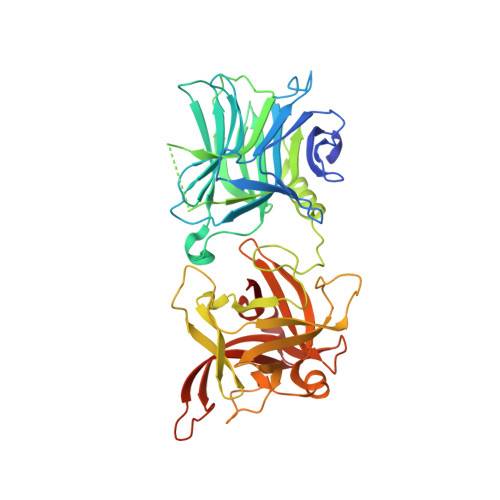Structural basis for the unique ganglioside and cell membrane recognition mechanism of botulinum neurotoxin DC.
Zhang, S., Berntsson, R.P., Tepp, W.H., Tao, L., Johnson, E.A., Stenmark, P., Dong, M.(2017) Nat Commun 8: 1637-1637
- PubMed: 29158482
- DOI: https://doi.org/10.1038/s41467-017-01534-z
- Primary Citation of Related Structures:
5LR0 - PubMed Abstract:
Botulinum neurotoxins (BoNTs), the most potent toxins known, are potential bioterrorism agents. It is well established that all seven serotypes of BoNTs (BoNT/A-G) require complex gangliosides as co-receptors. Here, we report that BoNT/DC, a presumed mosaic toxin between BoNT/D and BoNT/C1, binds and enters efficiently into neurons lacking complex gangliosides and shows no reduction in toxicity in mice deficient in complex gangliosides. The co-crystal structure of BoNT/DC with sialyl-Thomsen-Friedenreich antigen (Sialyl-T) suggests that BoNT/DC recognizes only the sialic acid, but not other moieties in gangliosides. Using liposome flotation assays, we demonstrate that an extended loop in BoNT/DC directly interacts with lipid membranes, and the co-occurring sialic acid binding and loop-membrane interactions mediate the recognition of gangliosides in membranes by BoNT/DC. These findings reveal a unique mechanism for cell membrane recognition and demonstrate that BoNT/DC can use a broad range of sialic acid-containing moieties as co-receptors.
Organizational Affiliation:
Department of Urology, Boston Children's Hospital, Harvard Medical School, Boston, MA, 02115, USA.

















